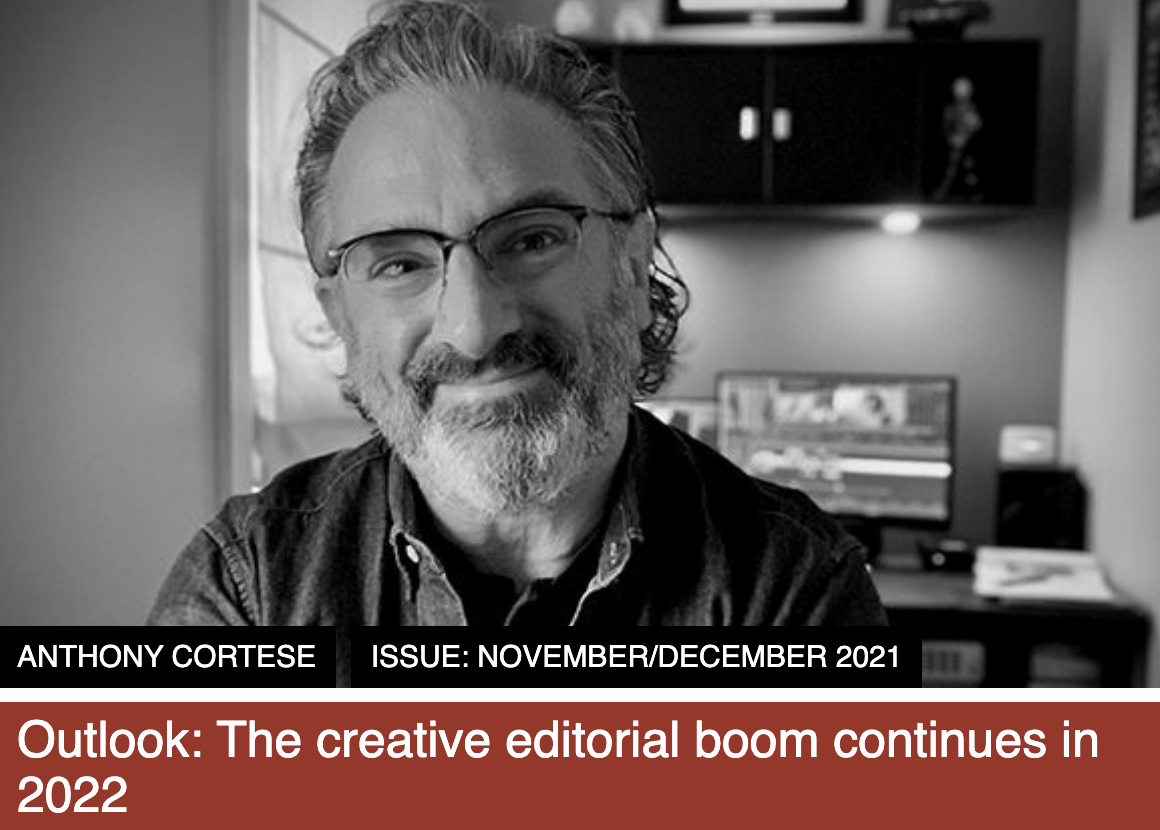At the start of the COVID lockdown, surrounded by a fortress of all the G-Drives I could fit into an Uber when I fled my Manhattan office, the thought of more work than I could handle seemed impossible. Those early days were a test of faith for every editor in the world. With production shut down, broadcasts were littered with one Zoom chat after the next. And that meant not much that needed to be edited.
But a funny thing happened as the weeks turned into months, and months into the new normal. Viewers consumed a lot of content — like a lot! And they expected it all on-demand. That content still needed to be created, and we were ready to meet that demand head on — right from the edit rooms we had set up in our homes.
With so many outlets for viewers to visit, one inevitable result of this on-demand paradigm is that our clients have had to be much more clever in how they draw in and retain audiences. For example, there’s been a huge surge in creating “shoulder content” (things like behind-the-scenes looks at the episode they just watched are wildly popular). It’s added value, a way to keep the audience engaged — if you give them a BTS piece at the end, you’re creating more fandom. Most of what we do as a company is content that’s ancillary and supports the main event. It’s marketing that doesn’t feel like marketing, and becomes part of the bigger story.
Because of this explosion in viewing, however, client demand has also soared. It’s a downside of the new look of collaboration; they know the edit bay is never far away, and some expect you to be at their beck and call. Since you’ve got more time to dedicate to work (what commute?), the output you’re expected to produce has also increased. That said, when you consider the amount of work editors are putting out now, with no real perceived quality difference, it’s clear the product has not suffered. Indeed, in some respects, it’s gotten better.
Through it all, we’ve discovered that the way editors and clients collaborate is forever changed. We’ve become more independent. We’ve had to. When you were in the room with other humans, you got instant feedback. Now, you have to be more predictive as to how clients will react. When possible, clients will sit in on sessions remotely, but it’s not the same. More often than not, we’re left on our own to be the “preditors” the industry demands we be.
But when you think about collaboration, you also have to think about how it affects editors, their colleagues and their assistants. Certainly, some of the technical skill (and maybe some creative) will suffer because you can’t ruminate over the edits. I’ve seen plenty of people who’ve worked well in those tight situations — their instincts are honed naturally. But unfortunately, I’ve also seen people who crumble in these same situations. They may have the chops, but they simply need time to think about their art.
I used to joke that being a good editor means being equal parts artist, tech support and therapist. One thing is certain: the next generation of editors will be very nimble when it comes to the technical demands of the job. They’ll have to be! But collaboration and communication are skills that new editors will have to work a lot harder at to tell their story, since many of the nuances of a great creative partnership come from what happens face-to-face, in the real world.
Anthony Cortese is the VP of editorial at Definition 6 (Definition6.com).

